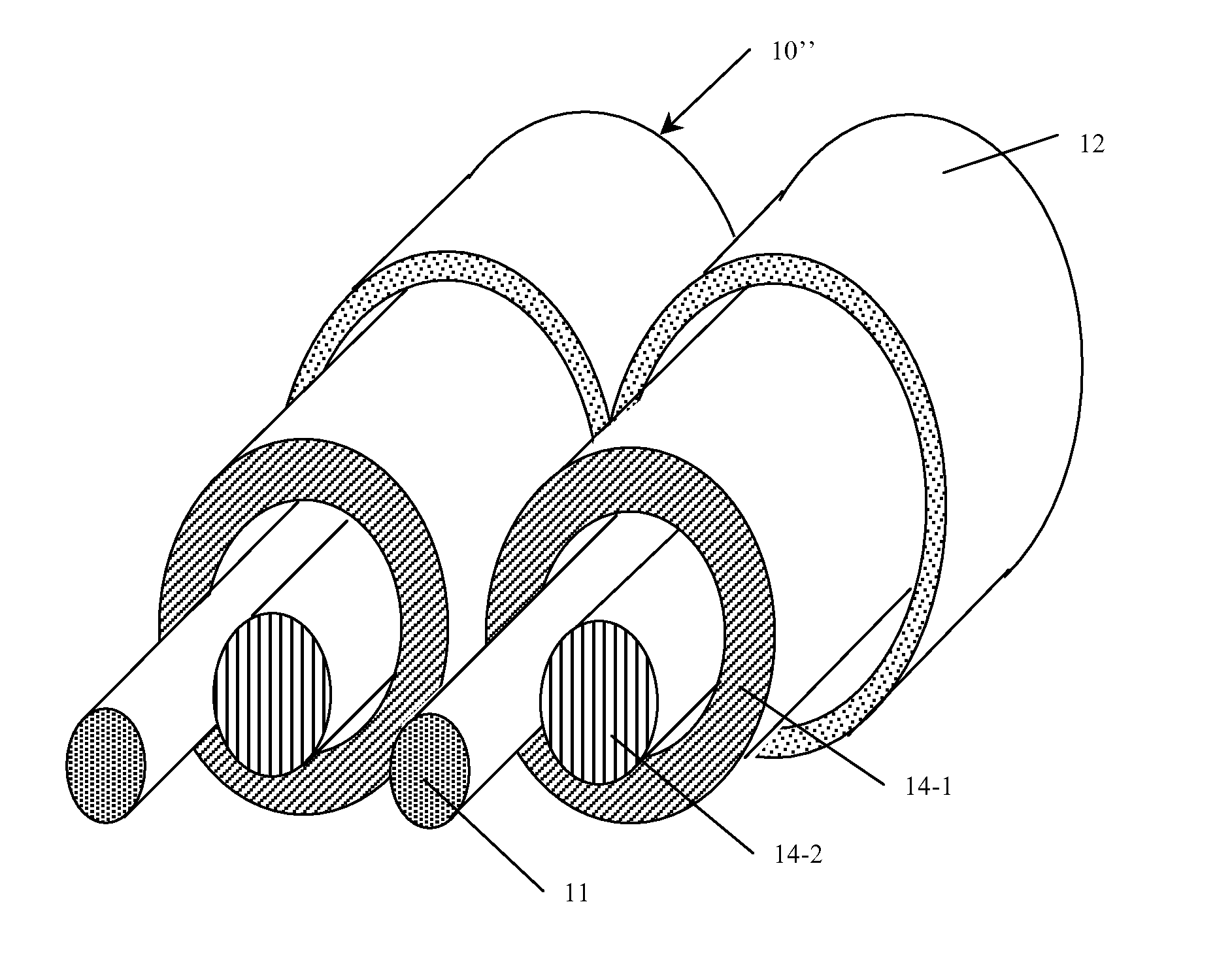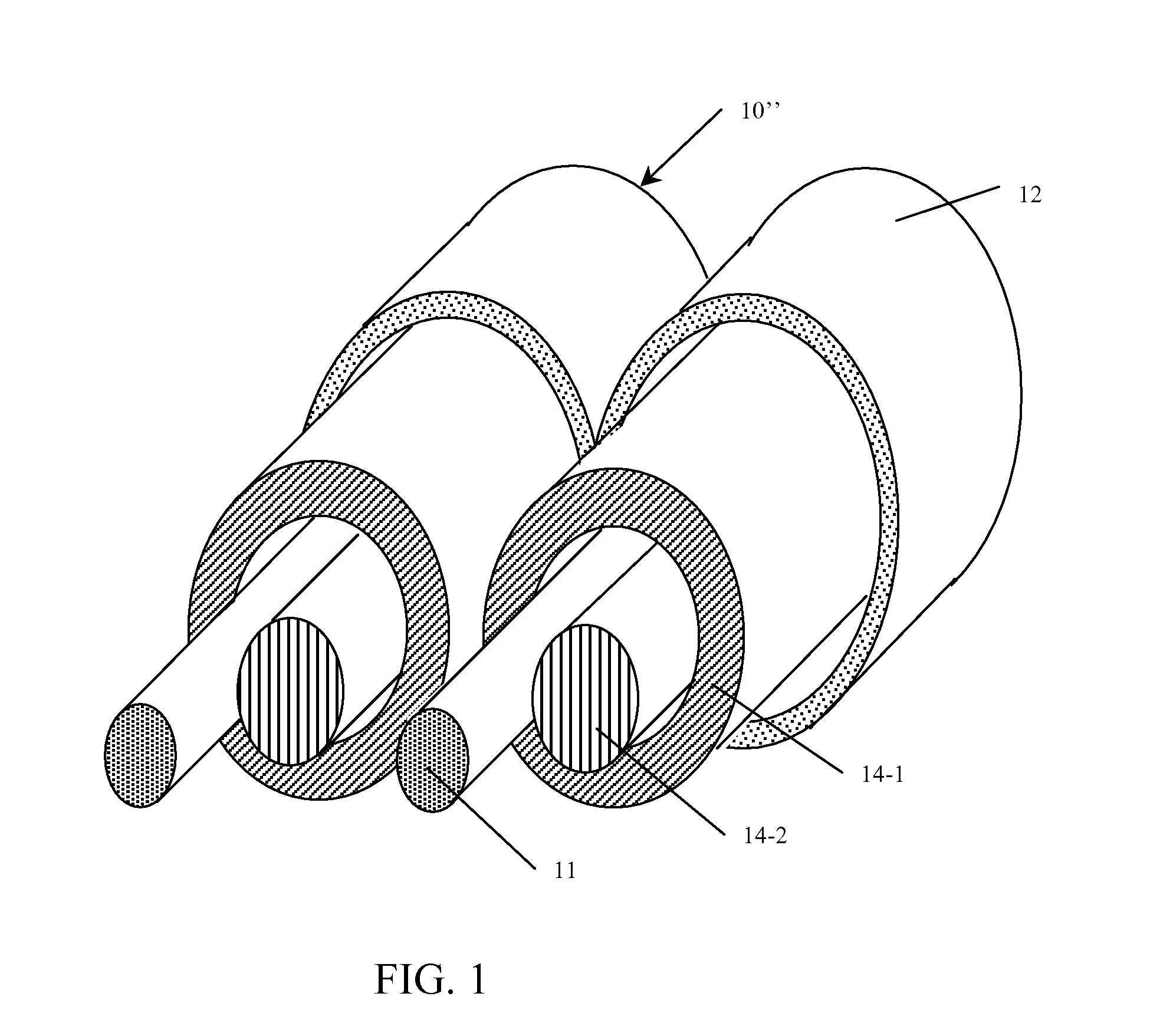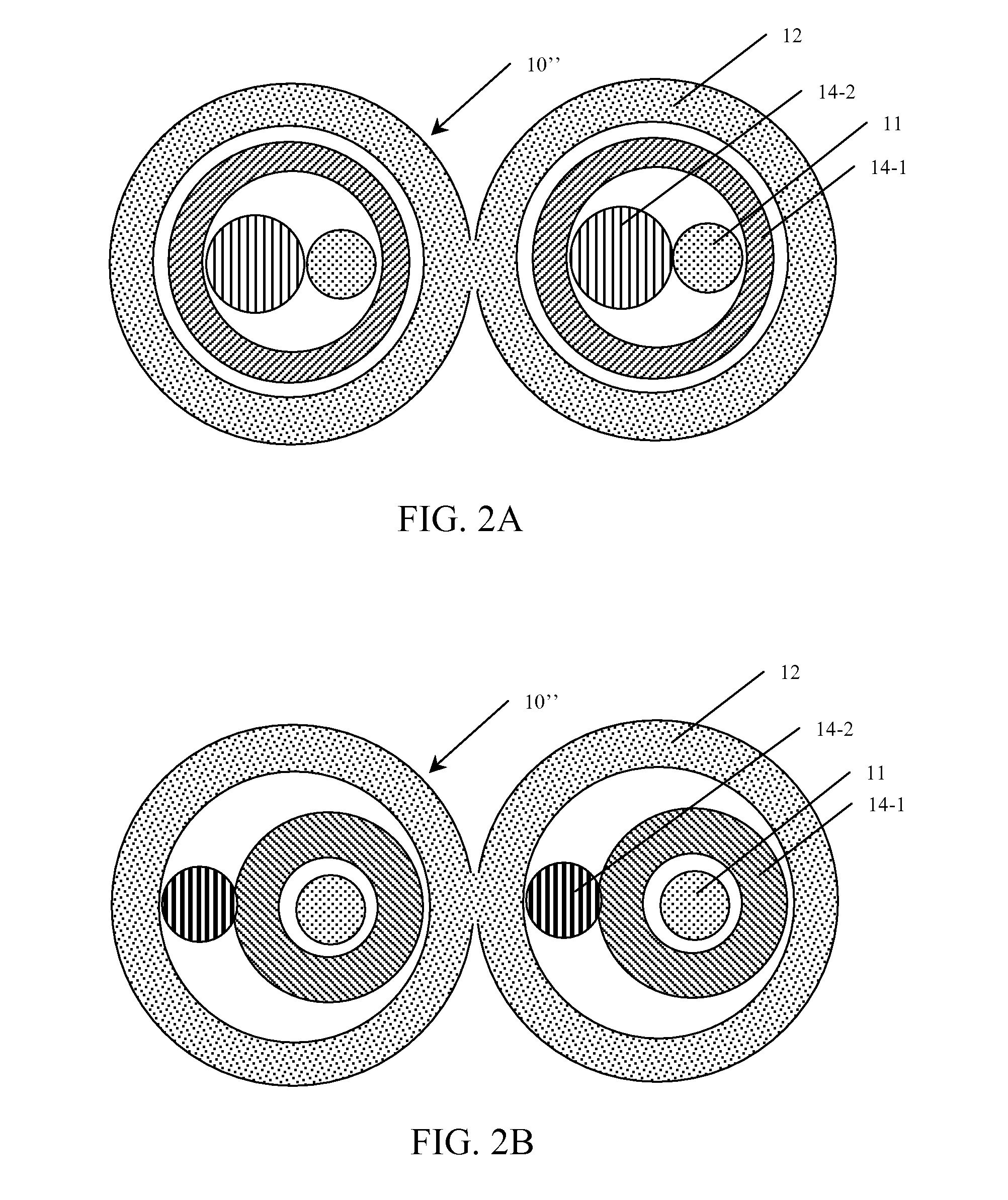Shape-Retaining Fiber Optic Cables Having Limited Bend Radius
a fiber optic cable and bend radius technology, applied in the field of interconnections, can solve the problems of increasing insertion loss, fiber optic cable damage, and careful handling of fiber optic cables, and achieve the effect of accepting the bend radius and facilitating deformation
- Summary
- Abstract
- Description
- Claims
- Application Information
AI Technical Summary
Benefits of technology
Problems solved by technology
Method used
Image
Examples
example
Materials
[0046]Suitable materials for use as the ductile element include, but are not limited to, the class of malleable metals which are highly ductile and relatively immune to work-hardening. Excessive work-hardening would potentially cause brittleness of the compliant material and lead to cracking and embrittlement over many cycles of cable shaping and reshaping. Optimal materials include soft annealed copper, brass, tin, aluminum or related alloys. In a particular example, the ductile element is comprised of soft annealed copper with 35,000 psi ultimate strength and 10,000 psi yield strength. In alternate examples, C260 (cartridge) brass with 47,900 psi ultimate strength and 16,000 psi yield strength or 1006-1008 series soft annealed steel may be utilized.
[0047]Materials suitable for the non-ductile element include, but are not limited to, the class of high strength, high carbon steel alloys. In a particular example, the non-compliant element is comprised of 1075-1095 series car...
PUM
 Login to View More
Login to View More Abstract
Description
Claims
Application Information
 Login to View More
Login to View More - R&D
- Intellectual Property
- Life Sciences
- Materials
- Tech Scout
- Unparalleled Data Quality
- Higher Quality Content
- 60% Fewer Hallucinations
Browse by: Latest US Patents, China's latest patents, Technical Efficacy Thesaurus, Application Domain, Technology Topic, Popular Technical Reports.
© 2025 PatSnap. All rights reserved.Legal|Privacy policy|Modern Slavery Act Transparency Statement|Sitemap|About US| Contact US: help@patsnap.com



